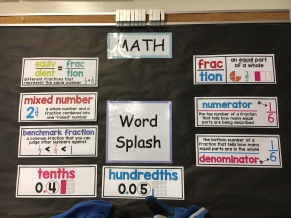One of the strongest draws towards reading Literacy Essentials: Engagement, Excellence and Equity for All Learners has been the many research-based practices offered by Routman and the different educators participating in this book study. Every blog post I read takes me back into Routman’s words with new eyes. It is a powerful reminder of how book clubs can support reading as a social practice, leading to deeper thinking and understanding of texts. Looking back over the last two months there are posts and discussions about: readers and writers; choice, agency and engagement; assessment; intervention; professional development; and, relationships and community. If you are just finding out about this book study now, I encourage you to read Routman’s book and the #litessentials posts that continue to provoke much thinking and discussion.
For my post today, I’d like to pick back up the importance of student talk that Routman (2018) addresses in her section on Equity (p. 304 – 309) and that Ryanne touched on in her previous post. Both Ryanne and Routman identify classroom conversations as one way to rebalance the power dynamics in and out of classrooms so that all students are valued and heard. Routman tasks us “to make sure our students, all of them, become master language manipulators in order to communicate in whatever format they are using” (p. 305). In order to help our students become master language manipulators it is first important to understand language registers.
Language registers consider the level of formality – the purpose, audience, topic and location of the communication (Montano-Harmon, , n.d.)
- Frozen or static register rarely changes and is scripted ex. prayers or laws.
- Formal register is impersonal and one-way ex. speeches.
- Consultative register is bound by expectations and includes professional discourse ex. academic talk.
- Casual/informal register is the type of conversations you have with different social groups you belong to such as friends, teammates and email exchanges.
- Intimate register is reserved for private communication with close family members.
Our students bring their knowledge of casual and intimate registers with them to school, but for many of our students, they have not yet learned how to engage in more formal registers. To support students to use the more formal consultative register, Routman encourages teachers to incorporate scaffolded conversations (p. 305). In this video with third grader Liam, you can hear Routman’s suggestion to “put the language in his ear”. Scaffolding talk is not providing the student more thinking time or increased opportunities for talk. Scaffolding talk is when the teacher supports the student by offering the vocabulary, syntax and support they need to express their ideas in academic ways.
Routman (2015) provides additional suggestions to teach and provide opportunities to develop and practice academic talk (p. 308), thus developing students’ abilities to fully communicate in a variety of situations:
- promote avid reading
- do more partner work, turn and talk, and small group work
- suggest specific vocabulary to the student
I would add social platforms such as Flipgrid and Padlet to the list above, in order to invite more introverted students into a safe space and to also build a third space between school and home for students to practice more formal registers.
Routman’s suggestion to “help the student recall unique language” (p. 308) is one I feel is especially useful to consider at this time of year. As we begin to think about how we will set up our schools and classrooms for the next school year, how might the walls become scaffolds for academic talk?
Below are two examples from a fifth grade classroom: a conversation anchor chart and an academic word wall (Moench, 2017).


Typically as teachers we really like to talk and are quite good at it. As we think about how to rebalance the power between teacher and student talk time, and provide equitable talk time for all of our students, we need to make some intentional changes in our practices and our learning environments. In her chapter on Equity, Routman (2018) has provided us with some practical starting points. What suggestions can you add? How have you supported student talk in your space?
How will you teach and support student talk for equity in your classrooms?
Thanks for reading!
Heather



Good post. I really try to give students a voice, but I feel like I restrict them more and more as the year moves forward because of all the demands placed on meeting standards.
LikeLike
Heather, I love this insightful post! You beautifully clarify and enrich what we mean by “scaffolded conversations” both in words and visuals. I like that you’ve included and defined language registers–“knowing the purpose, audience, topic, and location of the communication” as crucial to effective scaffolding. I also appreciate your definition of scaffolding talk as “when the teacher supports the student by offering vocabulary, syntax, and support they need to express their ideas in academic ways.” And, of course, scaffolded conversations work best when we teachers have effectively frontloaded– for example, around a topic of study so students possess key vocabulary and concepts–and we are supporting students to organize and speak what they “know,” but they are not quite ready to verbalize on their own. Thanks for your important contribution! With admiration, Regie
LikeLike
Heather,
I am humbled that you included mention of my post, and applaud you for extending the topic of classroom conversations so eloquently. You brought things to the topic that I hadn’t considered. I am reflecting on how I can do a better job of scaffolding my learners in the different registers of talk. Thank you for your wisdom and insight.
LikeLike